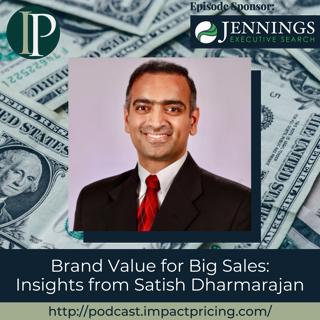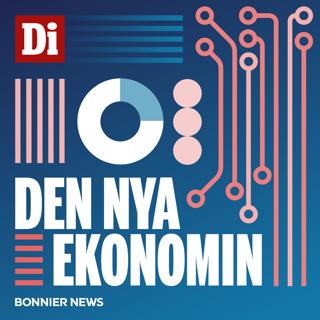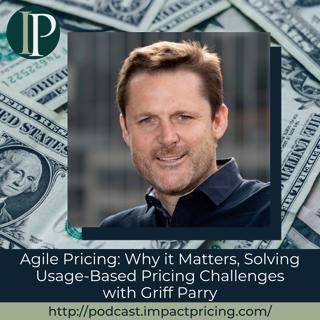
Agile Pricing: Why it Matters, Solving Usage-Based Pricing Challenges with Griff Parry
Griff Parry is the Founder and CEO of m3ter where he helps make it easy for SaaS companies to intelligently deploy and manage usage-based pricing. He's led AWS' go-to market strategy for games and gambling in EMEA, and his background includes entertainment at Sky TV and accounting at Ernst & Young. Griff was an extra in the movie "First Night" around 1993. In this episode, Griff shares the work that they do at m3ter in helping customers deploy and manage usage-based pricing. He also discusses common pricing challenges, especially on doing a price change, emphasizing the importance of agility and transformation. Why you have to checkout today's podcast: Understand the importance of having the agility to change pricing models quickly and in different situations, especially as to why pricing is not a one-and-done thing Discover how m3ter helps SaaS companies make it easy to deploy and manage usage-based pricing Find out in which circumstance usage-based pricing works best as you learn about different pricing philosophies "Particularly in these market conditions, I would suggest that you set yourself up so that you can customize pricing by customer, or do more of that. There is a lot of money you'll be leaving on the table if you have a one-size-fits-all pricing strategy." – Griff Parry Topics Covered: 01:49 – How Griff got into pricing 03:05 – What m3ter aims to solve in relation to usage-based pricing 05:06 – Delivering agility to the customers (why pricing is not a one-and-done thing) 08:57 – How m3ter helps customers find the right pricing model for the right situation 11:30 – Circumstances wherein you'd want to use usage-based pricing 14:45 – Pricing is an exchange of value between you and your customers 16:09 – Bill for overage over cap vs. renegotiate next year (tips on do's and don'ts) 20:02 – Platform versus solution pricing (pricing philosophy of AWS and m3ter) 30:59 – Griff's pricing advice 33:05 – Connect with Griff Key Takeaways: "Pricing is complicated; it involves lots of people. You need to bring them together so that they can plan and deploy those changes." – Griff Parry "Pricing is very definitely not one-and-done." – Griff Parry "To work out what you want to price, you have to look at what's going on at the moment. You have to have ready access to data about what people are consuming and how they respond to pricing changes." – Griff Parry "Pricing is an exchange of value between you and your customers. If they understand that they should pay more because they're using more or getting more value, that's fantastic; that's great for both parties." – Griff Parry People / Resources Mentioned: m3ter: https://www.m3ter.com Connect with Griff Parry: Email: griff@m3ter.com LinkedIn: https://www.linkedin.com/in/griffinparry/ Connect with Mark Stiving: LinkedIn: https://www.linkedin.com/in/stiving/ Email: mailto:mark@impactpricing.com
20 Mars 202334min

Blogcast: A Price Signaling Example?
This is an Impact Pricing Blog published on February 8, 2023, turned into an audio podcast so you can listen on the go. Read Full Article Here: https://impactpricing.com/blog/a-price-signaling-example/ If you have any feedback, definitely send it. You can reach us at mark@impactpricing.com. Now, go make an impact. Connect with Mark Stiving: Email: mark@impactpricing.com LinkedIn: https://www.linkedin.com/in/stiving/
17 Mars 20233min
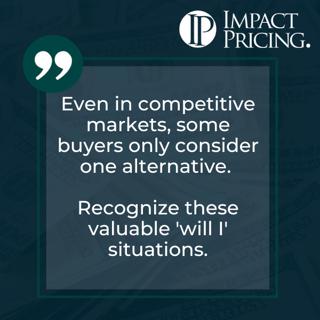
Pricing Table Topics: 8 of Diamonds – Some Buyers Only Consider One Alternative Even in Competitive Markets
This one is the 8 of Diamonds from the Selling Value card deck. Let's say that you are in a marketplace where people almost always decide between your product and competitor's products. Gee, could I think of some? How about an automobile, right? You happen to be the Audi dealer and somebody is, somebody just crashed their car and we think they're going to walk into our Audi dealership. In our mind we're thinking, Hey, they're not only looking at us, but they're also looking at BMW or Mercedes or Lexus or Porsche, right? There's lots of different places where they might be go looking at my competitive alternatives. And so as a salesperson, I might be thinking, Ohh, I've got to sell against all of these other problems, or all of these other competitive alternatives. On the other hand, it is very possible that somebody walks into our showroom and isn't going to consider a competitive alternative. They walk into our showroom because somebody told them that we are the best product, we're the best dealership, and they should go buy a product from us. And they're not even going to go look at somebody else. Or maybe they walked into our showroom because they've owned three Audis in the past. They're an Audi loyalist. And they're going to come in and buy another Audi from us because that's what they drive. That's who they identify as. There are lots of reasons why people might choose to just buy your product. What we want to do is think about, what are those different situations? What are those different mindsets where people might just be looking at our product and not a competitive alternative? And the reason this is so important is because when we can recognize those reasons, we don't have to give big discounts. People are going to buy from us because we solve their problem, not because we're cheaper than a competitor. We hope you enjoyed this example of Pricing Table Topics. What you just heard was done without a script. If you want to get better at speaking about pricing and value, grab a deck of our cards, pick a card, read the saying, then talk for one to two minutes about what that card says. You'll become a better speaker and expert. If you have any questions or feedback, please email me, mark@impactpricing.com. Now, go make an impact. Connect with Mark Stiving: Email: mark@impactpricing.com LinkedIn: https://www.linkedin.com/in/stiving/
15 Mars 20233min
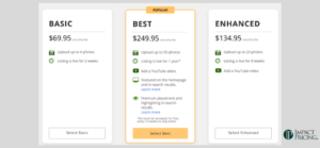
Blogcast: Evaluating a Pricing Strategy
This is an Impact Pricing Blog published on February 1, 2023, turned into an audio podcast so you can listen on the go. Read Full Article Here: https://impactpricing.com/blog/evaluating-a-pricing-strategy/ [powerpress] If you have any feedback, definitely send it. You can reach us at mark@impactpricing.com. Now, go make an impact. Connect with Mark Stiving: Email: mark@impactpricing.com LinkedIn: https://www.linkedin.com/in/stiving/
10 Mars 20233min
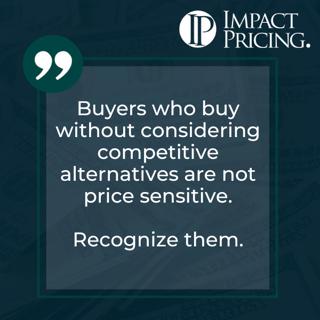
Pricing Table Topics: 8 of Clubs – Buyers Who Buy without Considering Competitive Alternatives
This one is the 8 of Clubs from the Selling Value card deck. Okay. You're wondering to yourself, do buyers ever not consider competitive alternatives? And the answer is, absolutely yes! Some easy consumer examples. When you buy popcorn at the movie theater, you couldn't buy popcorn anywhere else. Therefore, you didn't consider a competitive alternative. You just said, am I going to buy popcorn here or not? And that's why they get away with charging really high prices for popcorn. What about last gas for 75 miles, when you're in the middle of nowhere and you only have an eighth of a tank of gas left? Are you going to buy gas at that gas station that's four times the price? Heck, yes you are! And that's because they know you didn't consider a competitive alternative. There wasn't one to consider at the time. Our job as salespeople should be to try to find different customers and recognize whether they're going to be looking at, or talking to, competitive alternatives. For example, if someone was referred to you, they're probably not going to go talk to a competitive alternative. They might, but they might not. So let's treat them as though they won't. What if someone's buying an add-on to a current product they have that you've sold to them? They're probably only buying it from you. What if they're using your subscriptions and are they going to buy the upgraded package or are they even going to pay you this month for the subscription that they bought a few months ago? In each one of those decisions, they're just deciding, am I going to buy from you? But they're not saying, should I switch? Should I look at competitive alternatives? There are lots of situations, and product types, where buyers don't look at competitive alternatives. We should be focusing on finding those buyers and making sure we're not discounting, or if we have the opportunity, consider raising the price a little bit. I can almost guarantee you they won't make a different decision. We hope you enjoyed this example of Pricing Table Topics. What you just heard was done without a script. If you want to get better at speaking about pricing and value, grab a deck of our cards, pick a card, read the saying, then talk for one to two minutes about what that card says. You'll become a better speaker and expert. If you have any questions or feedback, please email me, mark@impactpricing.com. Now, go make an impact. Connect with Mark Stiving: Email: mark@impactpricing.com LinkedIn: https://www.linkedin.com/in/stiving/
8 Mars 20233min
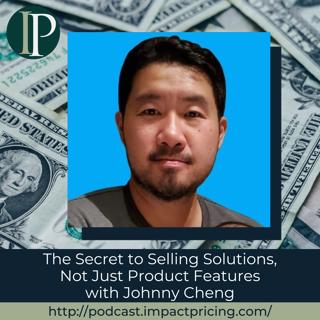
The Secret to Selling Solutions, Not Just Product Features with Johnny Cheng
Johnny Cheng is the Senior Director of Pricing and Packaging at ClickUp. He was the Senior Director of Pricing and Packaging at Coupa Software, and has years of experience in Product Marketing through various companies. In this episode, Johnny shares his knowledge and experience on product marketing and product management as he educates us on the benefits of solution pricing, especially as to how a lens test helps on creating packages. Why you have to checkout today's podcast: Find out what crucial perspective companies miss when pricing sits in finance Learn about the benefits of having solution pricing, as well as to how you can sell value instead of features Discover a packaging system that incredibly works, both for the customers and the company "Go do the lens test. Even if your packaging is already set, I would go back and do that exercise. I feel like if you do it across different teams, you'll be very surprised at what you see." – Johnny Cheng Topics Covered: 01:05 – How Johnny got into pricing 01:50 – Comparing the role of product management with product marketing 05:46 – Does pricing ever exist without packaging or are the two just so tightly connected? 08:33 – Johnny as a strong believer of having solution pricing 12:18 – Johnny vs. Mark on good, better, best 15:16 – The system Johnny uses to decide which features goes in which package 20:58 – Tips and tools that can help you sell value instead of features 26:56 – Salespeople discounting too much because they don't sell the value of the product 28:47 – Johnny's pricing advice 30:05 – Connect with Johnny Key Takeaways: "I'm seeing more and more in product marketing just exactly to your point. It's more customer driven, it's more go-to market driven, it's more value driven. And so, if you sit in product management, every feature you release is the best feature ever, right? But product marketing really understands the value and how to apply to certain customers, what the use cases are, what the different profiles are and how you monetize that, and I feel like you kind of lose that lens sitting in the product management side." – Johnny Cheng "Once you have kind of that product marketing angle, that's where the magic happens, right? Because that feature could be worth $1 to this one segment and $10 to this other segment. You would never know unless you actually go find out what their pain points are, find out what their needs are." – Johnny Cheng People / Resources Mentioned: ClickUp: https://clickup.com/ Marketo: https://business.adobe.com/products/marketo/adobe-marketo.html Gainsight: https://www.gainsight.com/ Coupa: https://www.coupa.com/ Selling Value: https://selling-value.com/ Zoom: https://zoom.us/ Connect with Johnny Cheng: LinkedIn: https://www.linkedin.com/in/jdcheng/ Email: jcheng@clickup.com Connect with Mark Stiving: LinkedIn: https://www.linkedin.com/in/stiving/ Email: mailto:mark@impactpricing.com
6 Mars 202331min

Blogcast: Transitioning to Selling Subscriptions
This is an Impact Pricing Blog published on January 25, 2023, turned into an audio podcast so you can listen on the go. Read Full Article Here: https://impactpricing.com/blog/transitioning-to-selling-subscriptions/ [powerpress] If you have any feedback, definitely send it. You can reach us at mark@impactpricing.com. Now, go make an impact. Connect with Mark Stiving: Email: mark@impactpricing.com LinkedIn: https://www.linkedin.com/in/stiving/
3 Mars 20233min
